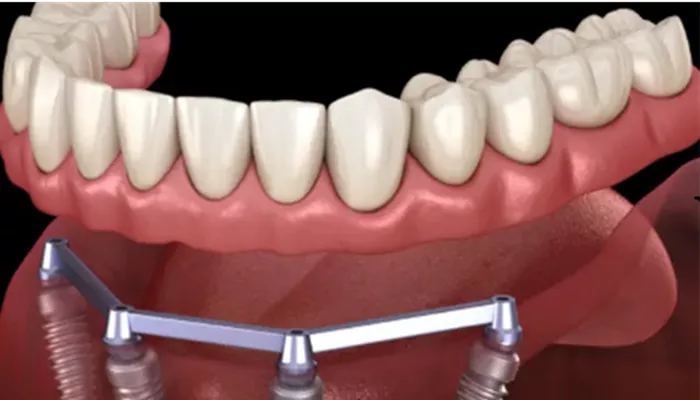Dental implants are a significant investment in oral health. The cost of dental implants can seem quite high compared to other dental treatments. Understanding the reasons behind this cost is important for patients considering this option for replacing missing teeth. There are multiple factors that contribute to the overall expense of dental implants, ranging from the materials used to the expertise required for the procedure.
High – Quality Materials
Implant Fixture
The implant fixture, which is inserted into the jawbone, is typically made of titanium or titanium – alloy. Titanium is chosen for its biocompatibility, meaning it is well – tolerated by the body and has a low risk of being rejected. However, high – quality titanium is not cheap. The manufacturing process to produce these implant fixtures with the right shape, surface texture, and strength properties is complex and costly. The implant fixture needs to be precisely engineered to ensure proper osseointegration (the process by which the bone fuses with the implant). For example, some implants have a threaded design to enhance their grip in the bone, and creating such a design requires advanced manufacturing techniques.
Abutment and Crown
The abutment, which connects the implant fixture to the crown (the visible part of the tooth), and the crown itself also contribute to the cost. Abutments can be made of different materials, and custom – made abutments are often necessary for a proper fit. Crowns are usually made of porcelain – fused – to – metal, all – ceramic, or zirconia. These materials are selected for their esthetic and functional properties. Porcelain – fused – to – metal crowns are relatively strong and have good esthetic qualities. All – ceramic crowns are more esthetically pleasing but may be slightly less durable in some cases, and zirconia crowns are very strong and also have good esthetic qualities. However, all of these materials are expensive, and the fabrication process, which often involves precise molding and coloring to match the patient’s natural teeth, adds to the cost.
Surgical Expertise and Training
Specialized Training
Dental implant procedures require dentists to have specialized training. Dentists need to learn not only the surgical techniques for implant placement but also how to assess the patient’s oral and general health conditions to determine if they are suitable candidates for implants. This training often involves attending courses, workshops, and sometimes even advanced degree programs. The knowledge and skills acquired through this training are reflected in the cost of the implant procedure. For example, a dentist needs to be able to accurately place the implant in the jawbone at the correct angle and depth to ensure successful osseointegration. This requires a high level of precision and experience.
Surgical Complexity
The surgical procedure itself can be complex. It involves making an incision in the gum tissue, preparing the bone for implant placement, and carefully inserting the implant. In some cases, additional procedures such as bone grafting may be required if there is insufficient bone in the jaw. Bone grafting is a more complex and costly procedure as it may involve using donor bone or synthetic bone substitutes. Also, if there are any anatomical challenges in the patient’s jaw, such as a narrow ridge or proximity to nerves, the surgical complexity increases, and so does the cost.
Diagnostic and Planning Tools
Pre – operative Imaging
Before a dental implant procedure, detailed pre – operative imaging is necessary. This often includes X – rays, CT scans, or cone – beam CT scans. These imaging techniques are used to assess the quality and quantity of the bone in the jaw, the location of nerves and blood vessels, and to plan the exact position of the implant. The equipment for these imaging techniques is expensive, and the cost of running and maintaining these machines is passed on to the patient as part of the implant cost. For example, a cone – beam CT scan can provide a three – dimensional view of the jaw, which is extremely valuable for accurate implant planning but is also a costly procedure.
Treatment Planning Software
Dentists may also use specialized treatment planning software. This software helps in visualizing the implant placement, predicting the outcome, and planning the prosthetic components. The development and licensing of such software are costly, and this cost is also incorporated into the overall cost of the dental implant procedure.
Post – operative Care and Follow – up
Initial Healing Phase
After the implant surgery, there is an initial healing phase where the patient requires close monitoring. The dentist may need to prescribe medications to prevent infection or manage pain. These medications add to the cost. Also, during this period, the patient may need to come in for regular check – ups to ensure that the implant is healing properly. The dentist’s time and resources used for these follow – up visits are factored into the cost.
Long – term Maintenance
Dental implants require long – term maintenance. This includes regular dental check – ups, cleaning, and sometimes adjustments to the prosthetic components. Over the years, the patient may need to have the crown replaced or the abutment adjusted. The cost of these long – term maintenance procedures is also considered when determining the overall cost of dental implants.
Conclusion
In conclusion, the high cost of dental implants is due to a combination of factors including the use of high – quality materials, the need for specialized surgical expertise and training, the use of expensive diagnostic and planning tools, and the cost of post – operative care and follow – up. While the cost may seem high, dental implants offer a long – lasting and effective solution for replacing missing teeth, which can be well worth the investment in terms of oral health and quality of life.
Related topics:

